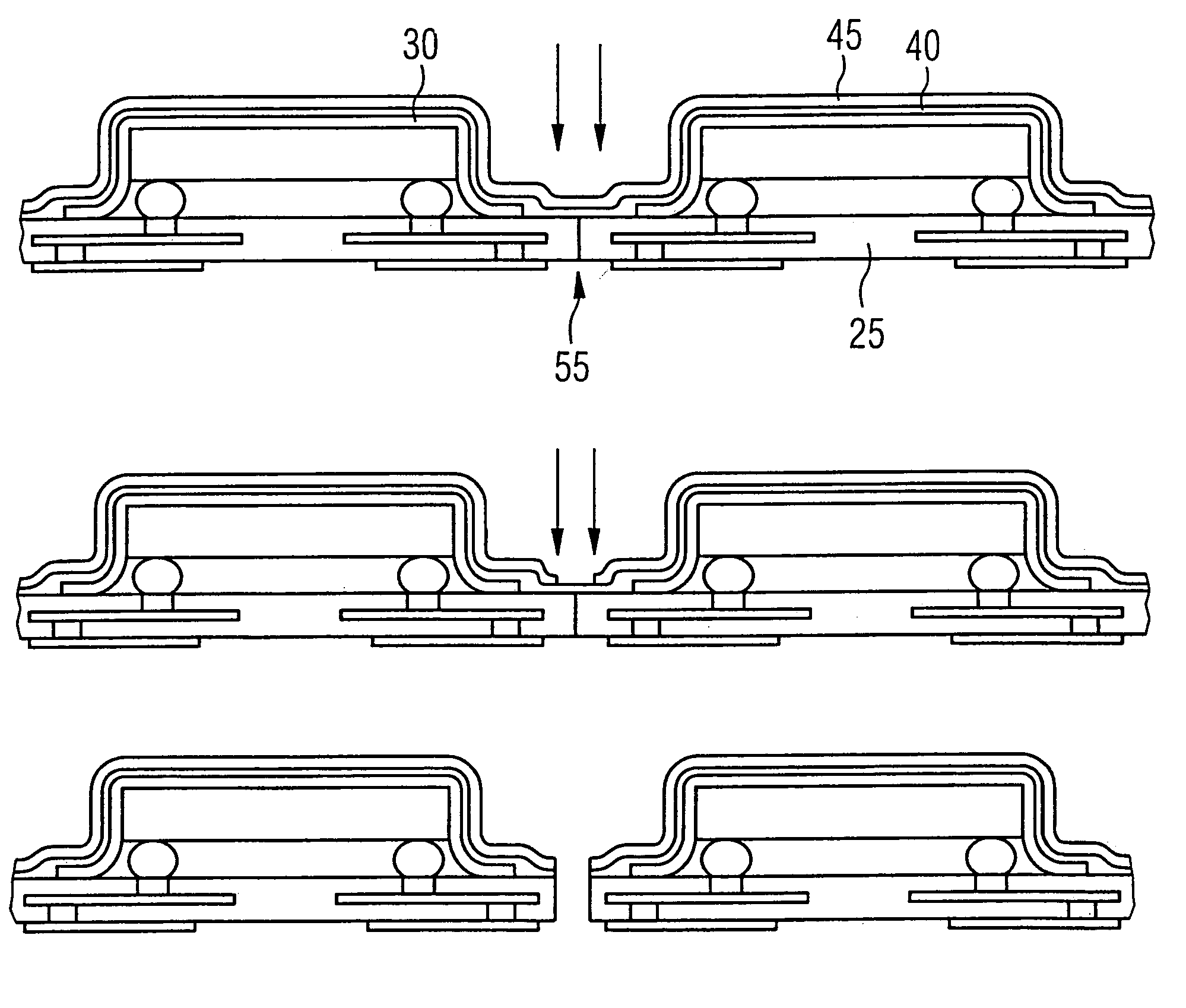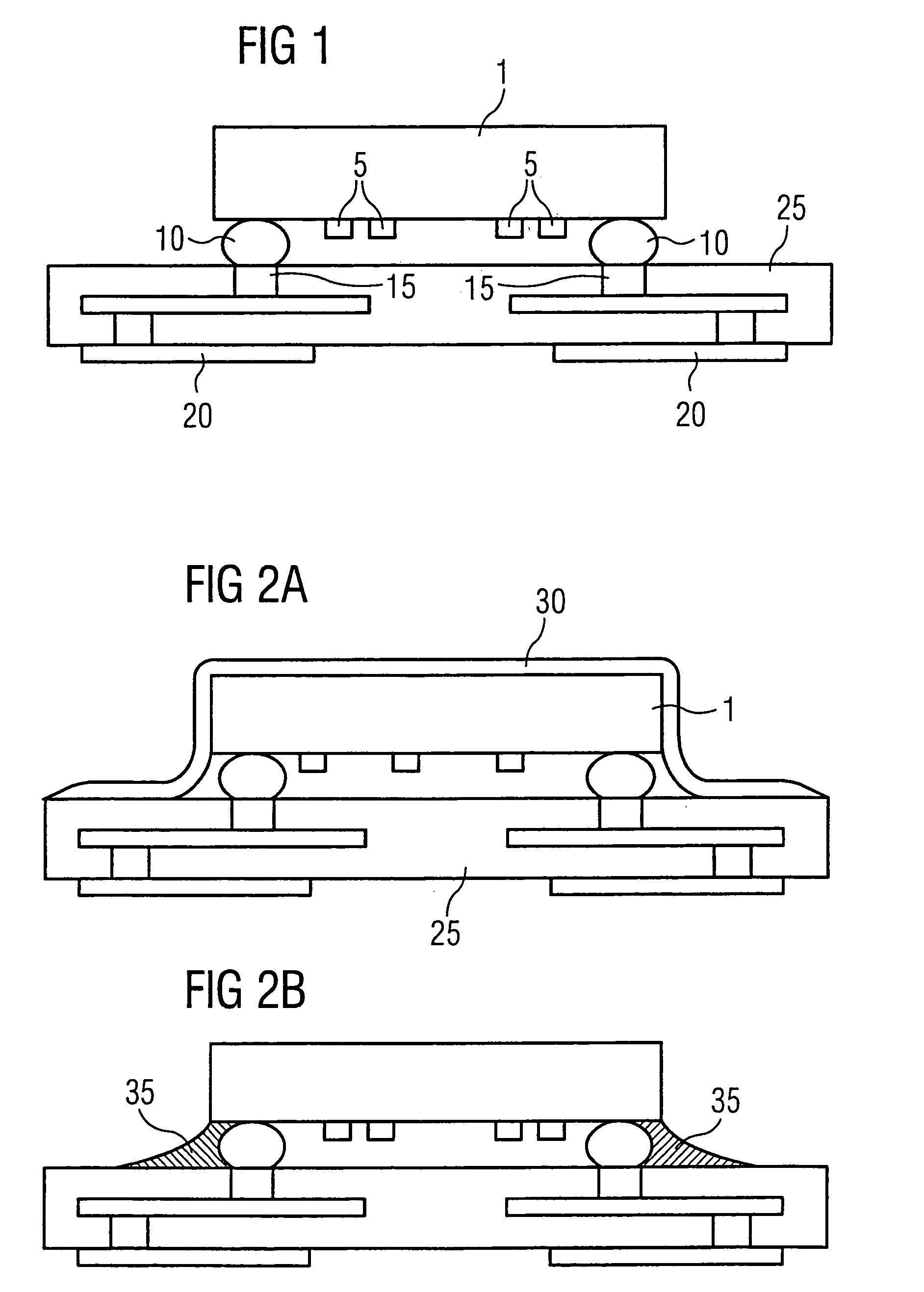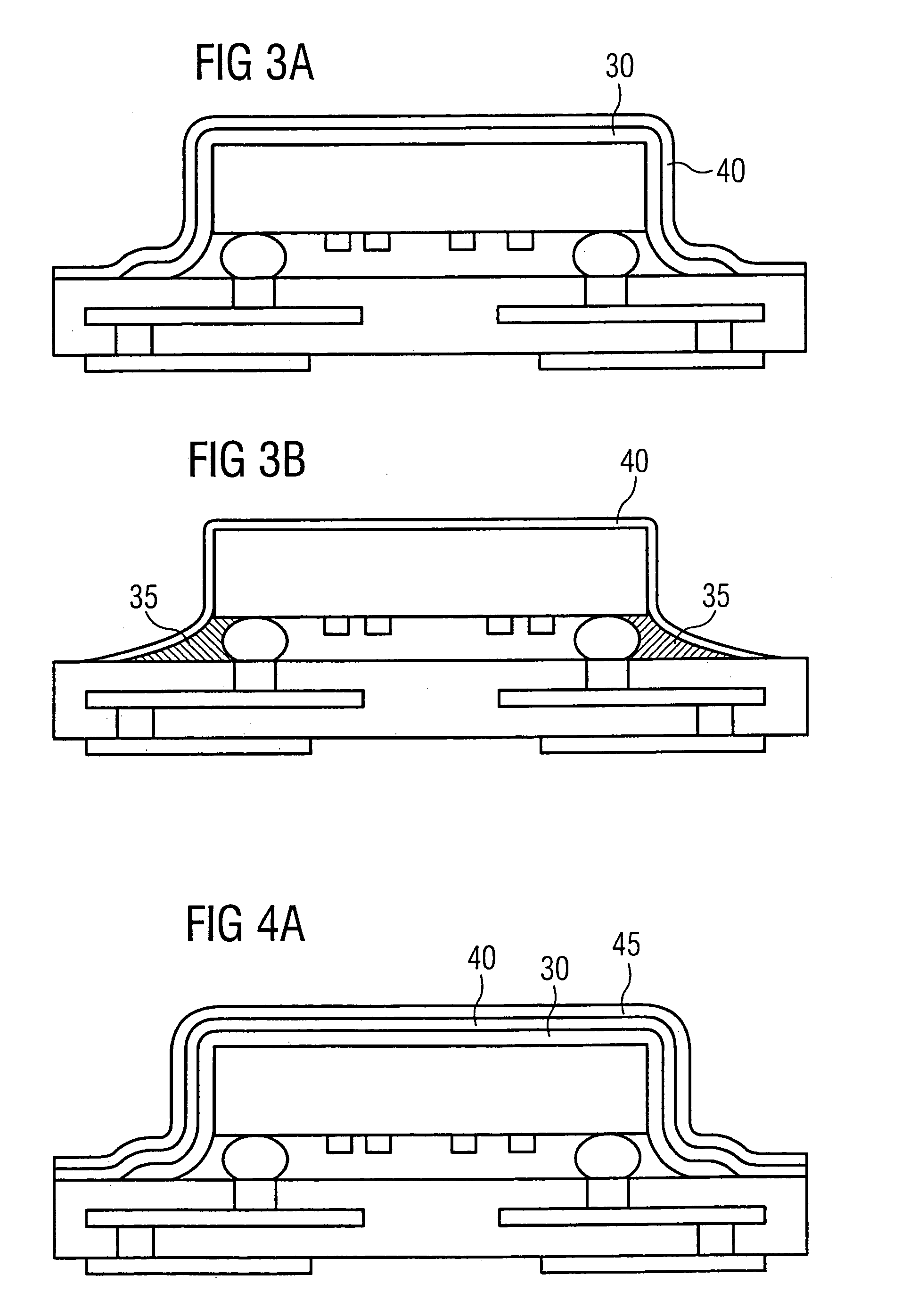Method for the hermetic encapsulation of a component
a technology of component and hermetic encapsulation, which is applied in the direction of semiconductor devices, semiconductor/solid-state device details, electrical devices, etc., can solve problems such as component corrosion, and achieve the effect of simple implementation
- Summary
- Abstract
- Description
- Claims
- Application Information
AI Technical Summary
Benefits of technology
Problems solved by technology
Method used
Image
Examples
Embodiment Construction
[0023]FIG. 1 shows an electrical component after the method step A). It is visible that a chip 1 is attached and contacted on a substrate 25 such that the component structures 5 located on the chip surface face the substrate 25. Solder balls 10 (bumps) thereby affix the component at a slight distance from the substrate and simultaneously electrically-conductively connect the connection areas 20 located on the substrate 25 with the component. A feedthrough 15 thereby provides for electrical contact between the connection areas 20 and the bumps 10.
[0024]FIG. 2A shows a variant of the method steps B) of the inventive method. A plastic film 30 is continuously applied over the back side of the chip 1 and the regions of the substrate 25 abutting the chip, and has subsequently been sealed with the substrate in the entire edge region of the chip. An embodiment alternative to FIG. 2A is visible in FIG. 2B. The space between lower edge of the chip 1 and the regions of the substrate abutting t...
PUM
| Property | Measurement | Unit |
|---|---|---|
| melting point | aaaaa | aaaaa |
| temperature | aaaaa | aaaaa |
| temperatures | aaaaa | aaaaa |
Abstract
Description
Claims
Application Information
 Login to View More
Login to View More - R&D
- Intellectual Property
- Life Sciences
- Materials
- Tech Scout
- Unparalleled Data Quality
- Higher Quality Content
- 60% Fewer Hallucinations
Browse by: Latest US Patents, China's latest patents, Technical Efficacy Thesaurus, Application Domain, Technology Topic, Popular Technical Reports.
© 2025 PatSnap. All rights reserved.Legal|Privacy policy|Modern Slavery Act Transparency Statement|Sitemap|About US| Contact US: help@patsnap.com



